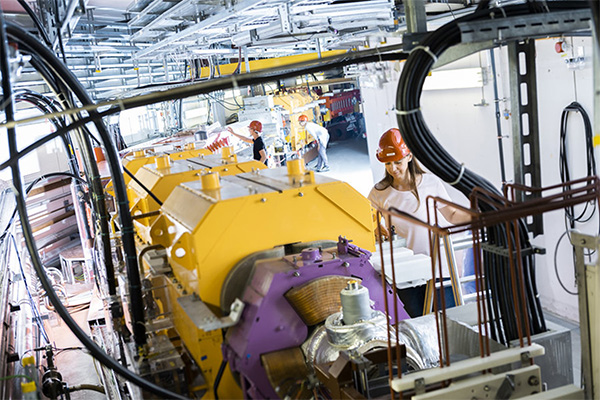CNAO receives funding for a joint research project with GSI

More than 385,000 € in Italian-German scientific cooperation
Two key partners of the OMA network will partner in the “CROSS” project to investigate for the first time in living organisms whether the sequence of carbon ions followed by photons is more effective in treating radioresistant tumors than the reverse order of irradiation. The study is part of a long-standing collaboration in which the National Center for Oncological Hadron Therapy CNAO in Pavia and the GSI Helmholtzzentrum für Schwerionenforschung in Darmstadt are involved in several other joint research projects.
CNAO has received a grant of 385,600 euros from the Italian Ministry of Foreign Affairs and International Cooperation (MAECI) as part of a call for proposals aimed at facilitating access for Italian researchers to certain cutting-edge scientific infrastructures in Germany that are not available in Italy. Thanks to the grant, a group of CNAO scientists will have access to GSI, a world-leading center for radiobiological research, providing an accelerator facility also able to perform in vivo experiments. The CNAO scientists will be supervised and supported by the team of Professor Marco Durante, Director of GSI’s Biophysics Department and one of the leading international experts in radiobiology and medical physics.
The research project, the MAECI grant was awarded for, is called “CROSS” (Combination of X-Ray and Carbon-iOns for radioresiStant tumorS) and aims to investigate whether mixed-beam radiotherapy with carbon ions followed by photons is more effective than the reverse sequence (photons followed by carbon ions) in a mouse model of osteosarcoma, a radioresistant tumor.
“The collaboration with CNAO is strategic for the GSI’s Biophysics Department and a win-win situation. We have the best possible research infrastructure, while CNAO is an advanced clinical center for carbon ion treatment,” stresses Professor Marco Durante. “In the project CROSS we try to answer a simple question: when patients are treated with conventional X-rays fractionated course and a boost of carbon ions, is it better to apply the boost before or after X-rays?”
The experiment will run already in the February 2024 block of FAIR-phase-0 and the researchers expect the results will have a strong translational potential in the CNAO clinic. Prof Durante says, “By working together, we can achieve outstanding results that have an international impact and benefit society in Europe and the whole world in the fight against cancer.”
CNAO and GSI have been actively collaborating in the field of scientific research since the center was founded in Pavia. Both are participating in the HITRIplus (Heavy Ion Therapy Research Integration Plus) project, which is funded by the European Union's Horizon 2020 program and whose coordinator is CNAO. The FOOT experiment (FragmentatiOn Of Target) is one of the many other collaborations in which the two partners are involved. It aims to analyze how protons and carbon ions break up nuclei in the human body to damage and kill cancer cells.
Thanks to the CROSS project and the grant received, CNAO and GSI have established a new preclinical research consortium that will enable multidisciplinary collaboration between radiobiology, biophysics and medicine in the treatment of tumors with heavy ions. This will enable important progress to be made in the field of radiation therapy with mixed beams. (CNAO/BP)
This news is based on a press release by the National Center for Oncological Hadron Therapy CNAO, Pavia, Italy.